From Manual to Smart: Pallet Inverters Transforming South Korea's Material Handling
Manual pallet handling is a bottleneck in any modern factory. It is slow. It is inconsistent. And it is often dangerous for the people doing the work. In a fast-paced industrial economy like South Korea's, where efficiency and automation are critical, these manual processes create significant drag. This inefficiency costs more than just time; it leads to product damage, potential worker injuries, and a logistics chain that cannot keep up with highly automated production lines. This hidden friction quietly drains profitability and holds back growth. The solution lies in targeted, smart automation, and for material handling, the pallet inverter stands out as a truly transformative technology.
Pallet inverters are transforming South Korea's material handling by automating the critical but often overlooked task of swapping pallets. This automation boosts operational speed, enhances worker safety, protects product integrity, and integrates seamlessly into the smart factory ecosystems driving the nation's industry. By replacing slow, strenuous manual labor with a fast, reliable, and controlled mechanical process, these machines eliminate a major source of inefficiency and risk on the factory floor.
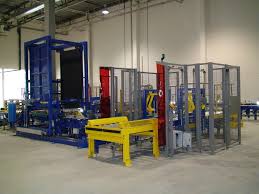
This transformation is about more than just moving goods faster. It represents a fundamental shift in how we approach operational challenges, turning a cost center into a streamlined, value-adding part of the process. But how does this technology deliver such tangible results, from the daily workflow on the factory floor to the company's bottom line? Let's break down the specific ways a pallet inverter can become one of the most valuable assets in your facility.
How Do Pallet Inverters Boost Operational Efficiency in Manufacturing?
Imagine a truck arriving with goods on cheap, one-way shipping pallets. Your factory, however, uses high-quality, standardized in-house pallets for your automated warehouse system. The bottleneck forms right there at the receiving dock. A team of workers must manually unload the entire pallet, stack the goods onto your house pallet, and then shrink-wrap it again. This process is slow, labor-intensive, and introduces a high risk of damaging the products. This single, inefficient step can disrupt your entire production schedule, causing delays that ripple through the facility. A pallet inverter solves this problem in under a minute.
A pallet inverter boosts operational efficiency by drastically reducing the time and labor required for tasks like pallet exchange, load recovery from damaged goods, and quality control access. By automating the transfer process, it enables much faster turnaround times at shipping and receiving docks. This speed minimizes product handling and damage, and it allows for the consistent use of standardized pallets throughout your internal logistics, which is essential for smooth integration with automated guided vehicles (AGVs) and warehouse management systems.
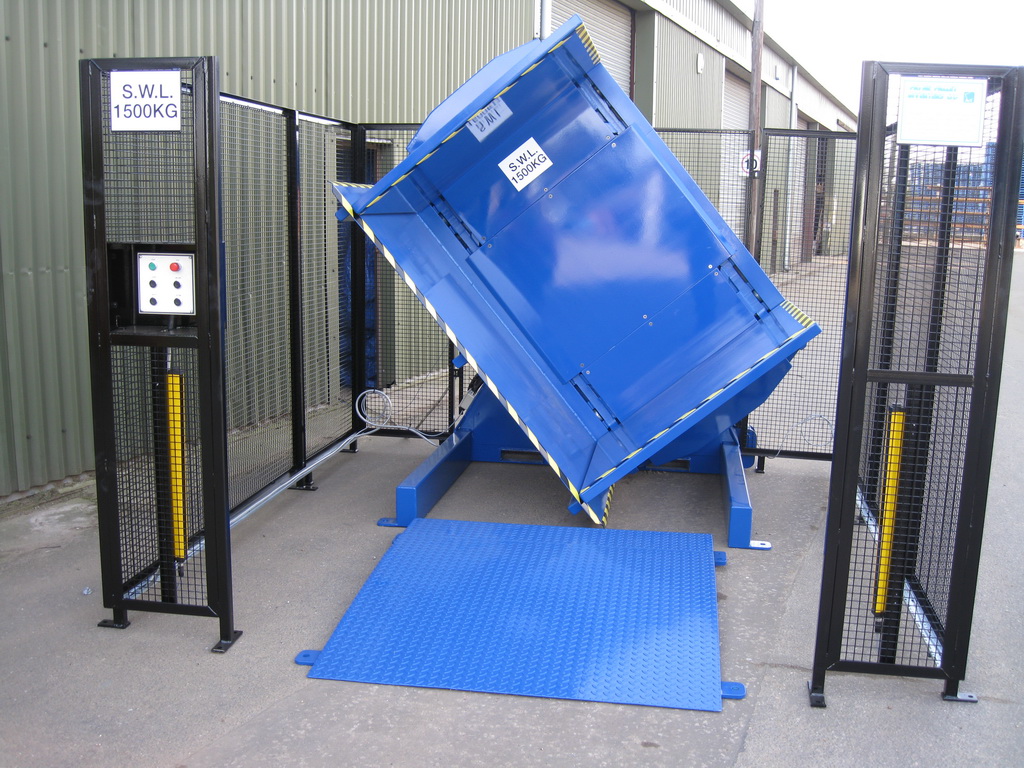
Streamlining Inbound and Outbound Logistics
The most immediate impact of a pallet inverter is felt at the interface between your factory and the outside world: the loading dock. In many industries, especially in fast-moving sectors like those in South Korea, goods arrive on various types of pallets. Manually transferring a 1,500 kg load from a wooden shipping pallet to a plastic hygiene pallet can take two workers 15-20 minutes. A pallet inverter accomplishes the same task with one operator in about 60 seconds. This is not just a marginal improvement; it is a complete change in workflow. For outbound logistics, the reverse is true. You can transfer your valuable in-house pallets to inexpensive shipping pallets just before loading, keeping your assets within the factory and reducing pallet replacement costs. This efficiency gain directly contributes to higher throughput and allows you to process more shipments per day with the same or fewer staff.
Minimizing Product Damage and Waste
Every time a product is handled manually, there is a risk of it being dropped, crushed, or contaminated. When a team has to de-stack and re-stack an entire pallet, these risks multiply. I have seen countless instances where a single slip during manual restacking led to thousands of dollars in written-off inventory. A pallet inverter handles the entire load as a single, stable unit. It clamps the load securely from the top and sides before gently rotating it. This controlled, mechanical process virtually eliminates the product damage associated with manual transfers. This is especially critical for industries with fragile goods, like electronics, or industries with strict hygiene standards, like food and pharmaceuticals, where preventing contamination during pallet exchange is paramount.
Optimizing Labor Allocation
By automating the repetitive and physically demanding task of pallet transfer, you free up your workforce. Your employees are your most valuable asset, and their time is better spent on tasks that require human intelligence and skill. Instead of performing strenuous manual labor, they can be reallocated to quality control, inventory management, or operating other complex machinery. This not only improves their job satisfaction and reduces physical strain but also makes your entire operation more productive. The pallet inverter does the heavy lifting, allowing your team to focus on adding value.
| Metric | Manual Pallet Transfer | Pallet Inverter Transfer |
|---|---|---|
| Time per Pallet (1.5 Ton) | 15-25 minutes | ~60 seconds |
| Labor Required | 2-3 Workers | 1 Operator |
| Risk of Product Damage | High | Very Low |
| Risk of Worker Injury | High (Back, Strain) | Very Low |
| Process Consistency | Low | High |
What Makes a Pallet Inverter a Smart Investment for Long-Term Reliability?
Any experienced factory owner, like my client Javier, understands that buying equipment is a major decision. You are not just buying a machine; you are investing in your factory's future performance. The fear of purchasing a machine that constantly breaks down, requires expensive repairs, or quickly becomes a bottleneck itself is very real. A cheap machine often becomes the most expensive one in the long run when you factor in downtime, lost production, and maintenance headaches. This is why a well-built pallet inverter should be viewed not as a simple purchase, but as a strategic, long-term asset designed for durability and a high return on investment (ROI).
A pallet inverter is a smart investment because its value is measured over years of reliable service, not just its initial purchase price. Its robust construction, simple and effective mechanics, and low maintenance needs ensure a very favorable total cost of ownership. The machine solves a recurring, fundamental operational problem—pallet exchange—day after day, year after year. The long-term cost savings from reduced labor, eliminated product damage, and fewer workplace injuries quickly surpass the initial capital outlay, delivering a clear and compelling ROI.
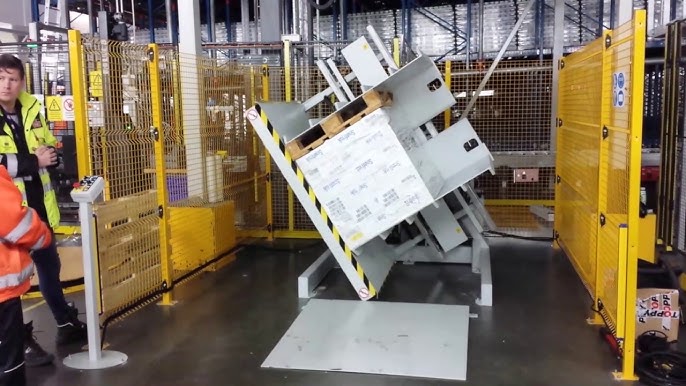
Calculating the Return on Investment (ROI)
A proper pallet inverter pays for itself, and you can calculate this. First, quantify your current costs. How many labor hours per week are spent on manual pallet transfers? Multiply that by your average wage. Second, estimate the annual cost of product damaged during these transfers. Third, consider the costs of workplace injuries related to manual handling, including insurance claims and lost time. These three factors represent your annual savings. When you compare these savings to the initial investment in the machine, you will typically find a payback period of 12 to 24 months. From that point on, the machine is generating pure profit for your operation. This is the kind of practical, data-driven analysis that makes sense to any business owner focused on a stable and profitable future.
Key Features for Durability and Low Maintenance
From my experience as an engineer, reliability comes from smart design and quality construction. A reliable pallet inverter is built with heavy-gauge steel for the frame and critical components. The hydraulics and electrical systems should be straightforward and use industry-standard parts that are easy to source and service. Look for features like adjustable clamping pressure, which prevents damage to sensitive loads and reduces stress on the machine. The control system should be intuitive, using simple push-buttons or a basic PLC, minimizing the need for specialized training. A well-designed machine is one that is built to withstand the tough environment of a factory floor for over a decade with only routine preventive maintenance.
Integration with Smart Factory Systems (IoT)
For forward-thinking leaders, a new machine must fit into the larger vision of a digital, connected factory. Modern pallet inverters are ready for this. They can be equipped with sensors and connectivity to integrate with your Manufacturing Execution System (MES). This allows you to track pallet movements, monitor cycle times, and schedule maintenance proactively. For instance, an IoT sensor could monitor hydraulic pressure or motor temperature, sending an alert before a component fails. This shifts you from reactive repairs to predictive maintenance, perfectly aligning with goals like increasing equipment uptime to 95%. A pallet inverter is not just a standalone mechanical solution; it is a node in your smart factory network.
Can Pallet Inverters Improve Worker Safety and Reduce Labor Costs?
One of the most physically demanding jobs on any factory floor is manually handling heavy loads. The constant lifting, bending, and twisting required to restack a pallet is a primary cause of musculoskeletal disorders (MSDs), particularly back injuries. These injuries are not just painful for the employee; they are extremely costly for the company. They result in higher insurance premiums, lost workdays, absenteeism, and lower morale among the workforce. The direct and indirect costs associated with just one serious back injury can be staggering. Pallet inverters directly address this root cause by completely eliminating the need for manual restacking, creating a fundamentally safer work environment for everyone.
Yes, pallet inverters dramatically improve worker safety by automating one of the most hazardous manual tasks in logistics. This automation directly reduces the risk of career-ending injuries and lowers the associated costs of workers' compensation claims. At the same time, by removing the need for a team of workers to perform this task, the machine significantly reduces the direct labor hours required for pallet exchange operations. This creates a powerful dual benefit: a safer workplace and a more efficient allocation of your labor budget.
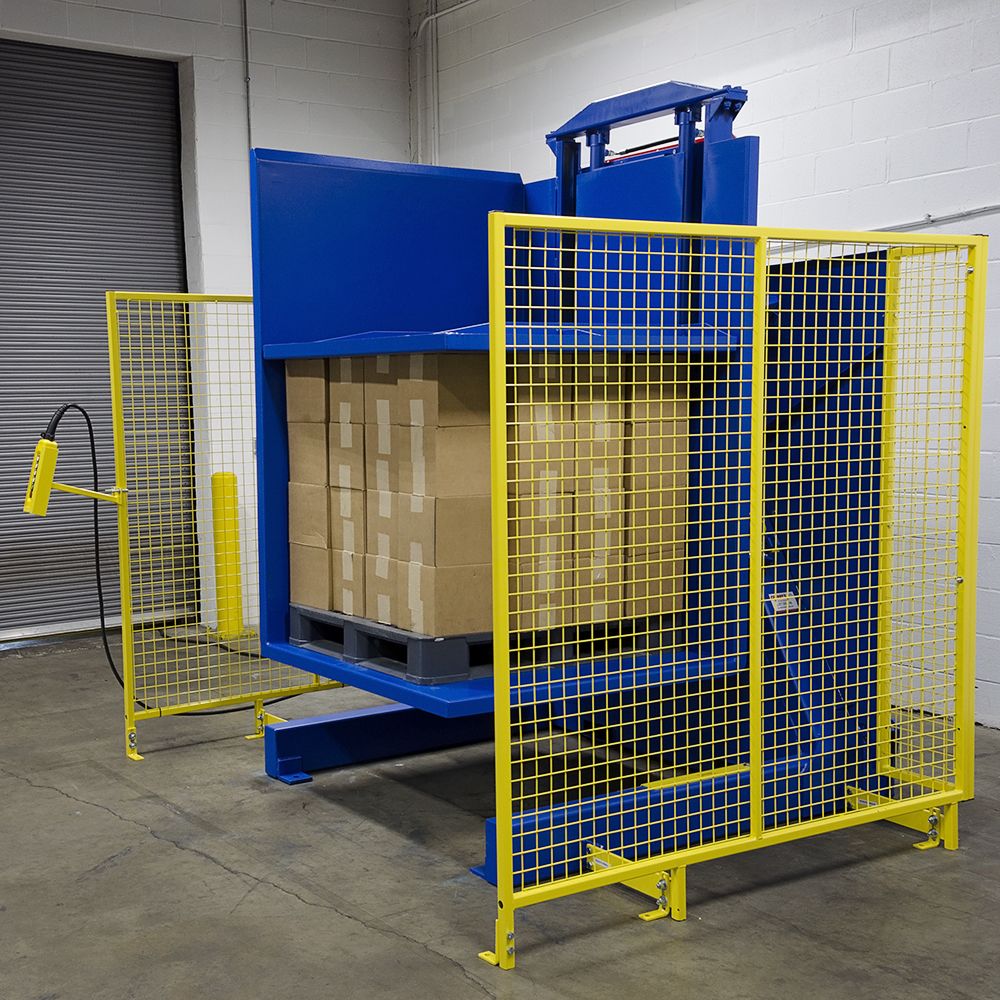
Ergonomics and Injury Prevention
The principles of ergonomics are simple: fit the task to the human, not the human to the task. Manually unloading a pallet is a perfect example of poor ergonomics. It forces workers into awkward postures while handling heavy weights. A pallet inverter is the ultimate ergonomic solution for this problem. It takes the entire load and repositions it mechanically. The operator simply places the pallet with a forklift and pushes a button. All the physical strain is absorbed by the machine's steel frame and hydraulic system. This shift from manual to automated handling is one of the most effective ways to engineer injury risk out of your process. It is a proactive measure that protects your employees' health and your company's financial well-being.
The Financial Impact of a Safer Workplace
The costs of an unsafe work environment go far beyond the obvious. There are direct costs, like medical bills and insurance premium hikes. But the indirect costs are often much larger. These include the cost of training a replacement worker, the production slowdowns that occur when an experienced employee is absent, and the administrative time spent managing the incident. By investing in a pallet inverter, you are making a direct investment in reducing all these costs. A safer workplace is a more productive and profitable workplace. This is a clear, tangible benefit that shows up on the balance sheet and contributes to a positive company culture.
Reallocating Human Capital to Value-Added Tasks
Reducing labor costs does not have to mean reducing headcount. Instead, it means you can reassign your team to more valuable activities. The workers who once spent their day doing strenuous, repetitive lifting can be trained to become machine operators, quality inspectors, or logistics coordinators. These roles are less physically demanding, more engaging, and add more direct value to your products and services. By automating the low-skill, high-risk tasks, you empower your workforce and elevate the overall skill level of your team. This is a strategic move that enhances both safety and operational capability.
| Task Element | Risk with Manual Handling | Risk with Pallet Inverter |
|---|---|---|
| Heavy Lifting | Constant, High Risk | None |
| Repetitive Bending | Constant, High Risk | None |
| Awkward Postures | Frequent, High Risk | None |
| Contact with Load | High (Crush/Pinch Hazard) | Minimal (Operator is at a distance) |
| Overall Injury Risk | High | Extremely Low |
What Should You Look for When Choosing and Maintaining a Pallet Inverter?
The market is filled with equipment options, and making the right choice can feel overwhelming. Choosing the wrong machine or, just as importantly, the wrong supplier, can turn a potential solution into a brand-new problem. You could end up with a machine that does not fit your specific load type, breaks down frequently, or has no available service support. This is a costly mistake I have seen happen too many times. Drawing on my journey from a young engineer on the factory floor to establishing my own packing machine factory, I want to share what truly matters. This is not about finding the cheapest vendor; it is about finding a strategic partner who is invested in your success.
When choosing a pallet inverter, you must look beyond the initial price tag. The most critical factors to assess are the machine's technical specifications in relation to your needs—its load capacity, cycle time, clamping system, and built-in safety features. However, what is equally important, and often overlooked, is the supplier. You must evaluate their technical support capabilities, the availability of spare parts, and their genuine willingness to understand your operation and act as a long-term partner.
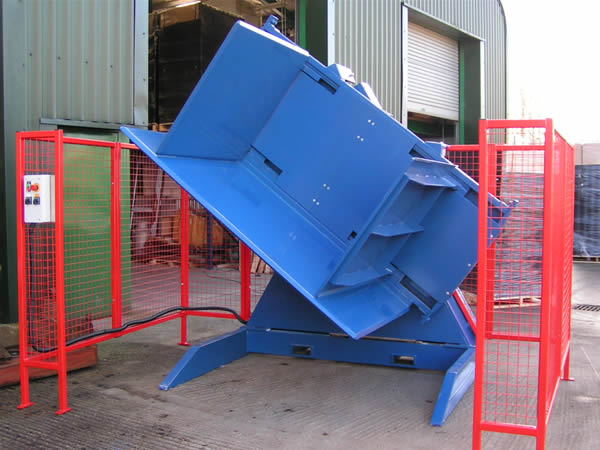
My Core Checklist for Machine Selection
I learned a hard lesson early in my career. I saw a client buy a pallet inverter based on price alone. It failed during their peak season, costing them a massive contract. That experience taught me to always use a checklist. First, Load Capacity and Type: Don't just match the weight. Consider the load's center of gravity. A tall, unstable load needs different handling than a dense, stable one. Second, Clamping System: Is the pressure adjustable? This is non-negotiable. For a steel mill owner like Javier, robust clamping is needed. But for a food company handling boxes of chips, excessive pressure will crush the product. You need finesse. Third, Cycle Time: How fast does it need to be to keep up with your line? Don't pay for speed you don't need, but don't create a new bottleneck. Finally, Safety Features: Look for light curtains, safety fencing, and emergency stops that are robust and reliable.
The Importance of a True Partnership
A machine is only as good as the support behind it. A true partner doesn't just sell you a box. They ask questions. They want to understand your product, your workflow, and your goals. I built my company, SHJLPACK, on this principle. We are a knowledge-sharing platform first. A good supplier will help you with installation and training. They will have a clear plan for providing spare parts. They will answer the phone when you have a technical question. This relationship is your insurance policy against downtime. It's the difference between a supplier who disappears after the check clears and a partner who helps you grow your business. This is what leaders like Javier are looking for: expertise and support, not just a piece of metal.
A Proactive Approach to Maintenance
The best way to ensure long-term reliability is through proactive maintenance. A good supplier will provide you with a clear maintenance schedule. This should be simple and straightforward.
- Daily: Visual inspection for any leaks or damage. Check that safety features are working.
- Weekly: Lubricate key moving parts as specified in the manual.
- Monthly/Quarterly: Check hydraulic fluid levels and filter conditions. Inspect electrical connections for tightness.
- Annually: A more thorough inspection, potentially with a technician from your supplier, to check for wear on major components.
This simple routine, which takes only a few minutes a day or week, will prevent the vast majority of problems and ensure your investment continues to pay dividends for years to come.
Conclusion
Pallet inverters are a key step toward smarter, safer, and more efficient material handling, offering a strong return on investment for any modern manufacturing or logistics operation.



